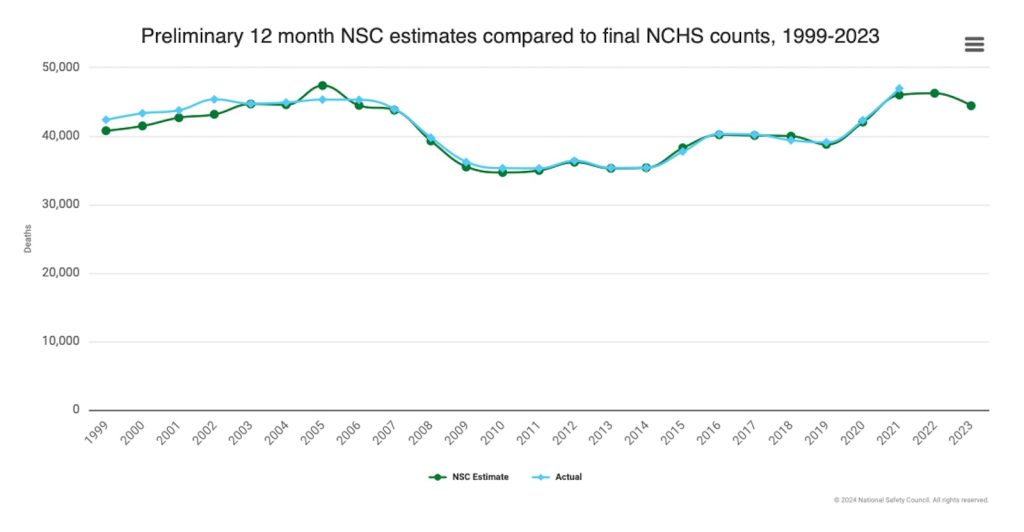The estimated number of deaths on U.S. roadways last year fell to 44,450 from 46,270, which is a decline of 4%. The first decline since 2019 came despite Americans driving 2.1% more miles in 2023.

Smartphones – especially when used for texting – have caught blame for a sharp rise in distracted driving crashes.
The estimated mileage death rate in 2023 is 1.36 deaths per 100 million vehicle miles traveled, down 6.2% from 1.45 in 2022 and down 9.3% compared to 2021.
Fatalities increased each of the previous three years, according to the National Safety Council, which compares its estimates against reports from the National Center for Health Statistics, or NCHS. The last confirmed number is from 2021 when HCHS reported 46,980 deaths.
The biggest factors in crashes include speeding, distracted driving and impaired driving, the organization noted.
State results
Some parts of the country saw declines in fatalities, including 12 states that saw declines of 10% or more: Alaska, Maine, Delaware, Hawaii, Massachusetts, Connecticut, New Jersey, New Mexico, Utah, Georgia, New York and Louisiana.
Conversely, seven states as well as the nation’s capital experienced increases of 10% or more compared to 2022 preliminary estimates: District of Columbia, Rhode Island, Arizona, Idaho, Iowa, North Dakota, Maryland and Kentucky.
More safety stories
- Hyundai Motor Group, Toyota and Mazda Dominate as IIHS Names 22 Top Safety Picks
- Tesla Cybertruck Crash Videos Set Off Alarms Among Safety Experts
- Full-Size Pickups Fail to Maximize Safety of Back Seat Passengers
Still a problem
While the decrease is good news on the surface, the NSC says the three-year rise reflects a big problem in the U.S.
“The most dangerous thing most people in our country do in a single day is use the U.S. roadway system. This public health crisis is an atrocity that must continue to be addressed,” said Mark Chung, executive vice president of roadway practice at NSC.
“No one should die getting to or from their homes, schools and workplaces, but the current system was not designed with the safety of all road users in mind. This is why we must continue to speak, act and cooperatively work together across public and private sectors to prioritize the safe travel of all road users; this is our focus when visiting with lawmakers in the spring, to continue advocating for the safety of all road users and ultimately save lives.”
Implementing a plan
The council believes it has an action plan, dubbed the Safe System Approach, that could help reduce crashes and fatalities. It begins by examining road safety holistically, focusing on five elements of a “safe transportation system: road users, speed management, vehicles, roads and post-crash care.”
The Safe Systems Approach, which was developed by the Federal Highway Administration, suggests using a series of safety countermeasures to lessen the number of crashes, injuries and deaths on U.S. roads.
Some of those include speed safety cameras, variable speed limits, improved road markings, rumble strips, median barriers and more.






0 Comments